3.7E: Exercises
( \newcommand{\kernel}{\mathrm{null}\,}\)
Practice Makes Perfect
Use the Vertical Line Test
In the following exercises, determine whether each graph is the graph of a function.
1. ⓐ
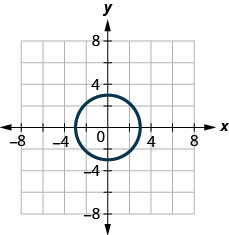
ⓑ
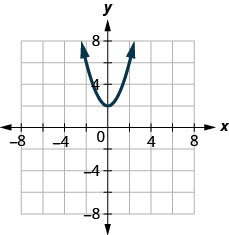
- Answer
-
ⓐ no ⓑ yes
2. ⓐ

ⓑ
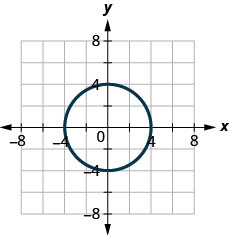
3. ⓐ
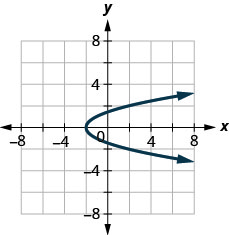
ⓑ
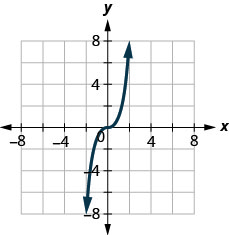
- Answer
-
ⓐ no ⓑ yes
4. ⓐ
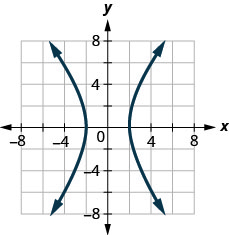
ⓑ
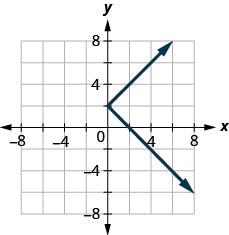
Identify Graphs of Basic Functions
In the following exercises, ⓐ graph each function ⓑ state its domain and range. Write the domain and range in interval notation.
5. f(x)=3x+4
- Answer
-
ⓐ
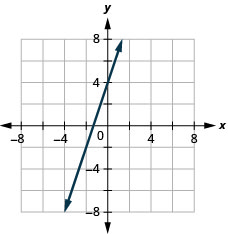
ⓑ D:(−inf,inf), R:(−inf,inf)
6. f(x)=2x+5
7. f(x)=−x−2
- Answer
-
ⓐ
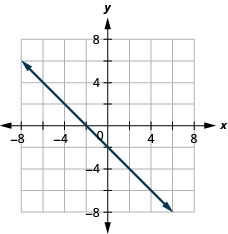
ⓑ D:(−inf,inf), R:(−inf,inf)
8. f(x)=−4x−3
9. f(x)=−2x+2
- Answer
-
ⓐ
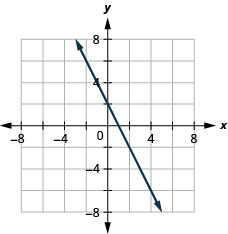
ⓑ D:(−inf,inf), R:(−inf,inf)
10. f(x)=−3x+3
11. f(x)=12x+1
- Answer
-
ⓐ
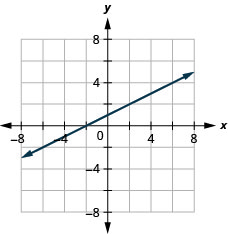
ⓑ D:(−inf,inf), R:(−inf,inf)
12. f(x)=23x−2
13. f(x)=5
- Answer
-
ⓐ
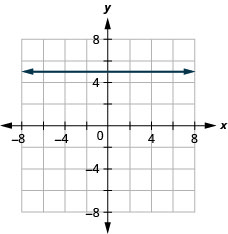
ⓑ D:(−inf,inf),R:5
14. f(x)=2
15. f(x)=−3
- Answer
-
ⓐ
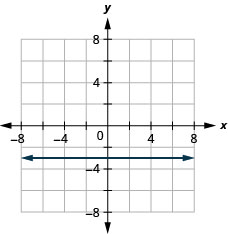
ⓑ D:(−inf,inf), R:−3
16. f(x)=−1
17. f(x)=2x
- Answer
-
ⓐ
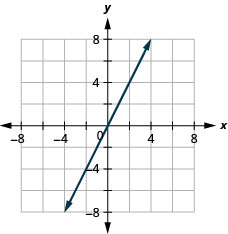
ⓑ D:(−inf,inf), R:(−inf,inf)
18. f(x)=3x
19. f(x)=−2x
- Answer
-
ⓐ
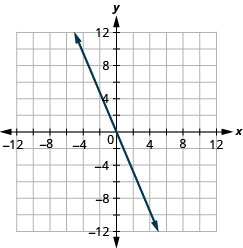
ⓑ D:(−inf,inf),R:(−inf,inf)
20. f(x)=−3x
21. f(x)=3x2
- Answer
-
ⓐ
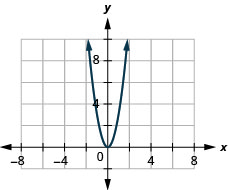
ⓑ D:(−inf,inf), R:[0,inf)
22. f(x)=2x2
23. f(x)=−3x2
- Answer
-
ⓐ
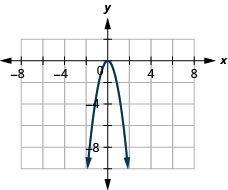
ⓑ D:(−inf,inf), R:(−inf,0]
24. f(x)=−2x2
25. f(x)=12x2
- Answer
-
ⓐ
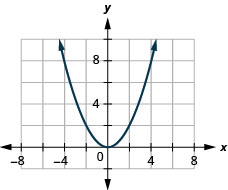
ⓑ D:(−inf,inf), R:[−inf,0)
26. f(x)=13x2
27. f(x)=x2−1
- Answer
-
ⓐ
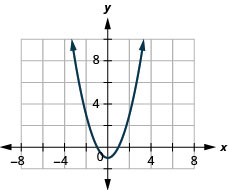
ⓑ D:(−inf,inf), R:[−1,inf)
28. f(x)=x2+1
29. f(x)=−2x3
- Answer
-
ⓐ
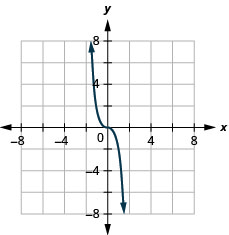
ⓑ D:(−inf,inf), R:(−inf,inf)
30. f(x)=2x3
31. f(x)=x3+2
- Answer
-
ⓐ
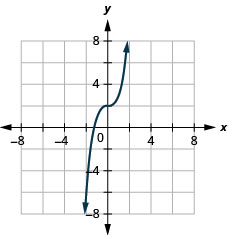
ⓑ D:(−inf,inf),R:(−inf,inf)
32. f(x)=x3−2
33. f(x)=2√x
- Answer
-
ⓐ
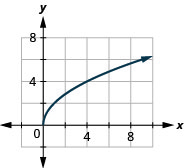
ⓑ D:[0,inf),R:[0,inf)
34. f(x)=−2√x
35. f(x)=√x−1
- Answer
-
ⓐ
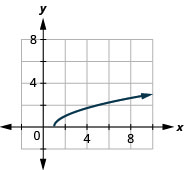
ⓑ D:[1,inf),R:[0,inf)
36. f(x)=√x+1
37. f(x)=3|x|
- Answer
-
ⓐ
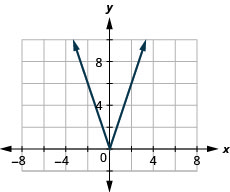
ⓑ D:[−1,−1,inf),R:[−inf,inf)
38. f(x)=−2|x|
39. f(x)=|x|+1
- Answer
-
ⓐ

ⓑ D:(−inf,inf),R:[1,inf)
40. f(x)=|x|−1
Read Information from a Graph of a Function
In the following exercises, use the graph of the function to find its domain and range. Write the domain and range in interval notation.
41.
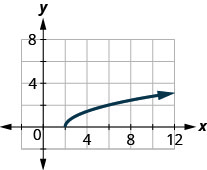
- Answer
-
D:[2,inf), R:[0,inf)
42.
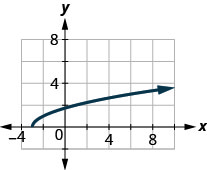
43.
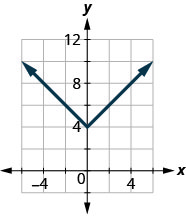
- Answer
-
D:(−inf,inf), R:[4,inf)
44.
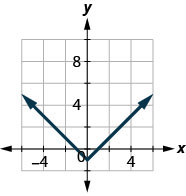
45.
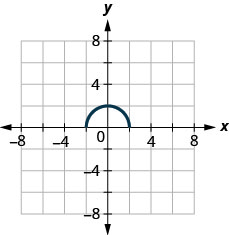
- Answer
-
D:[−2,2], R:[0,2]
46.
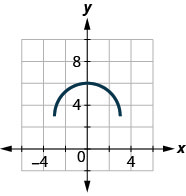
In the following exercises, use the graph of the function to find the indicated values.
47.
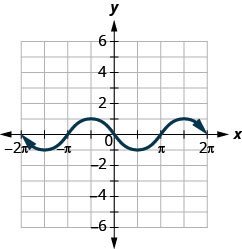
ⓐ Find: f(0).
ⓑ Find: f(12π).
ⓒ Find: f(−32π).
ⓓ Find the values for x when f(x)=0.
ⓔ Find the x-intercepts.
ⓕ Find the y-intercepts.
ⓖ Find the domain. Write it in interval notation.
ⓗ Find the range. Write it in interval notation.
- Answer
-
ⓐ f(0)=0 ⓑ (π/2)=−1
ⓒ f(−3π/2)=−1 ⓓ f(x)=0 for x=−2π,−π,0,π,2π
ⓔ (−2π,0),(−π,0), (0,0),(π,0),(2π,0) (f)(0,0)
ⓖ [−2π,2π] ⓗ [−1,1]
48.
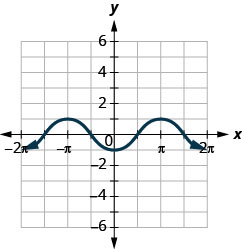
ⓐ Find: f(0).
ⓑ Find: f(π).
ⓒ Find: f(−π).
ⓓ Find the values for x when f(x)=0.
ⓔ Find the x-intercepts.
ⓕ Find the y-intercepts.
ⓖ Find the domain. Write it in interval notation.
ⓗ Find the range. Write it in interval notation
49.
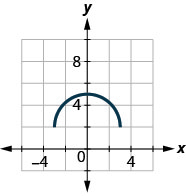
ⓐ Find: f(0).
ⓑ Find: f(−3).
ⓒ Find: f(3).
ⓓ Find the values for x when f(x)=0.
ⓔ Find the x-intercepts.
ⓕ Find the y-intercepts.
ⓖ Find the domain. Write it in interval notation.
ⓗ Find the range. Write it in interval notation.
- Answer
-
ⓐ f(0)=−6 ⓑ f(−3)=3 ⓒ f(3)=3 ⓓ f(x)=0 for no x ⓔ none ⓕ y=6 ⓖ [−3,3]
ⓗ [−3,6]
50.
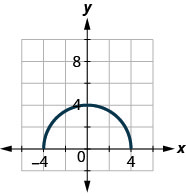
ⓐ Find: f(0).
ⓑ Find the values for x when f(x)=0.
ⓒ Find the x-intercepts.
ⓓ Find the y-intercepts.
ⓔ Find the domain. Write it in interval notation.
ⓕ Find the range. Write it in interval notation
Writing Exercises
51. Explain in your own words how to find the domain from a graph.
52. Explain in your own words how to find the range from a graph.
53. Explain in your own words how to use the vertical line test.
54. Draw a sketch of the square and cube functions. What are the similarities and differences in the graphs?
Self Check
ⓐ After completing the exercises, use this checklist to evaluate your mastery of the objectives of this section.

ⓑ After reviewing this checklist, what will you do to become confident for all objectives?


